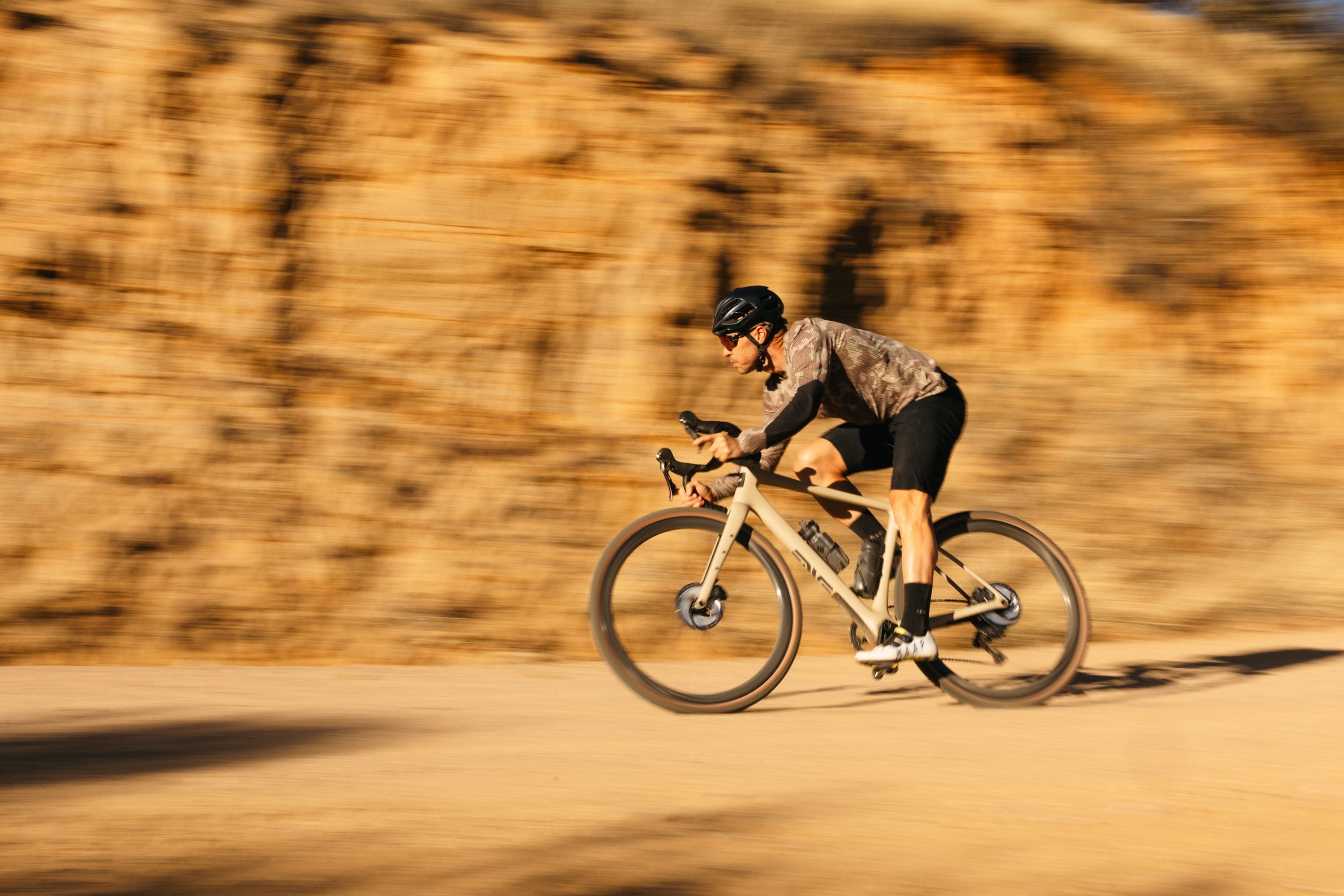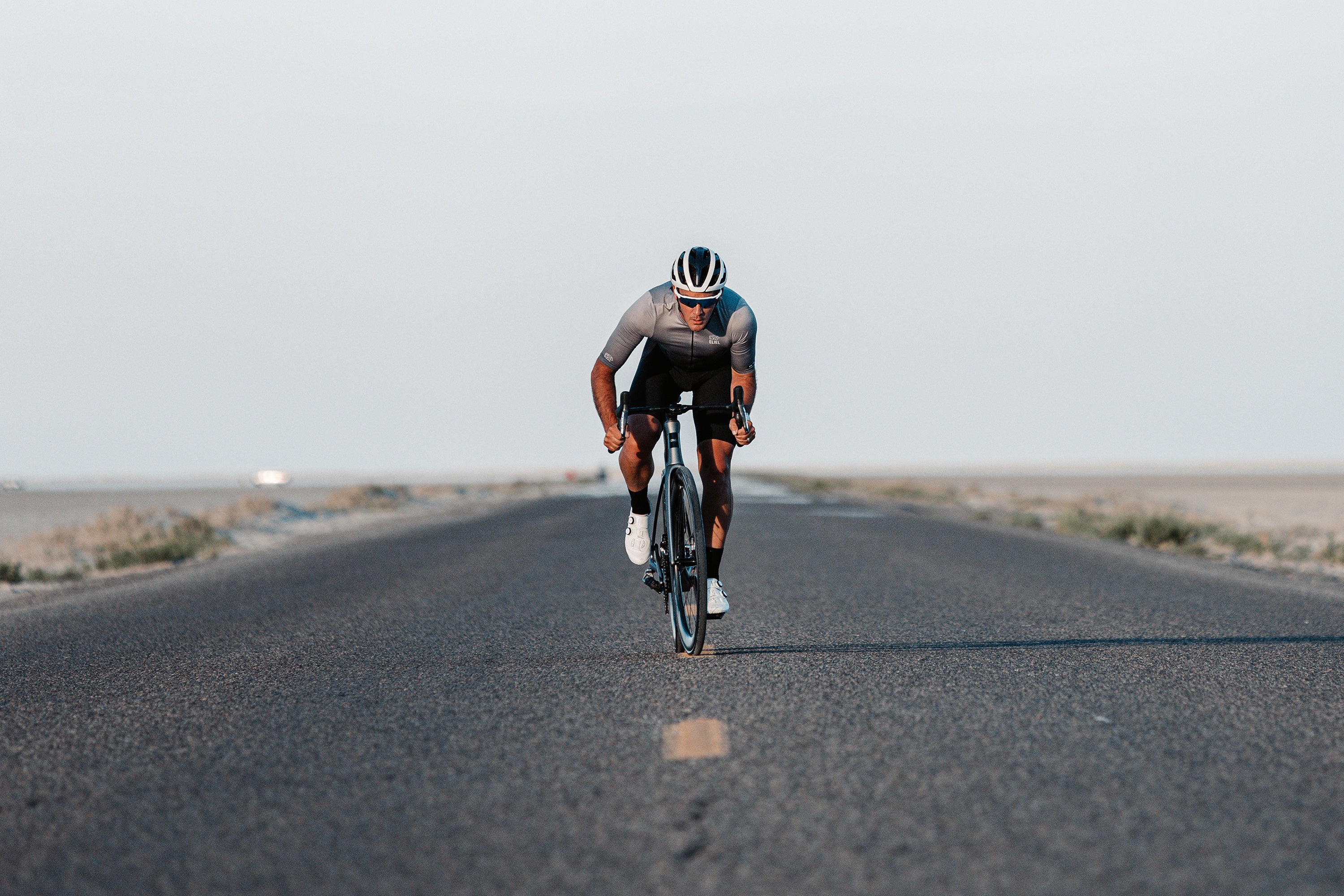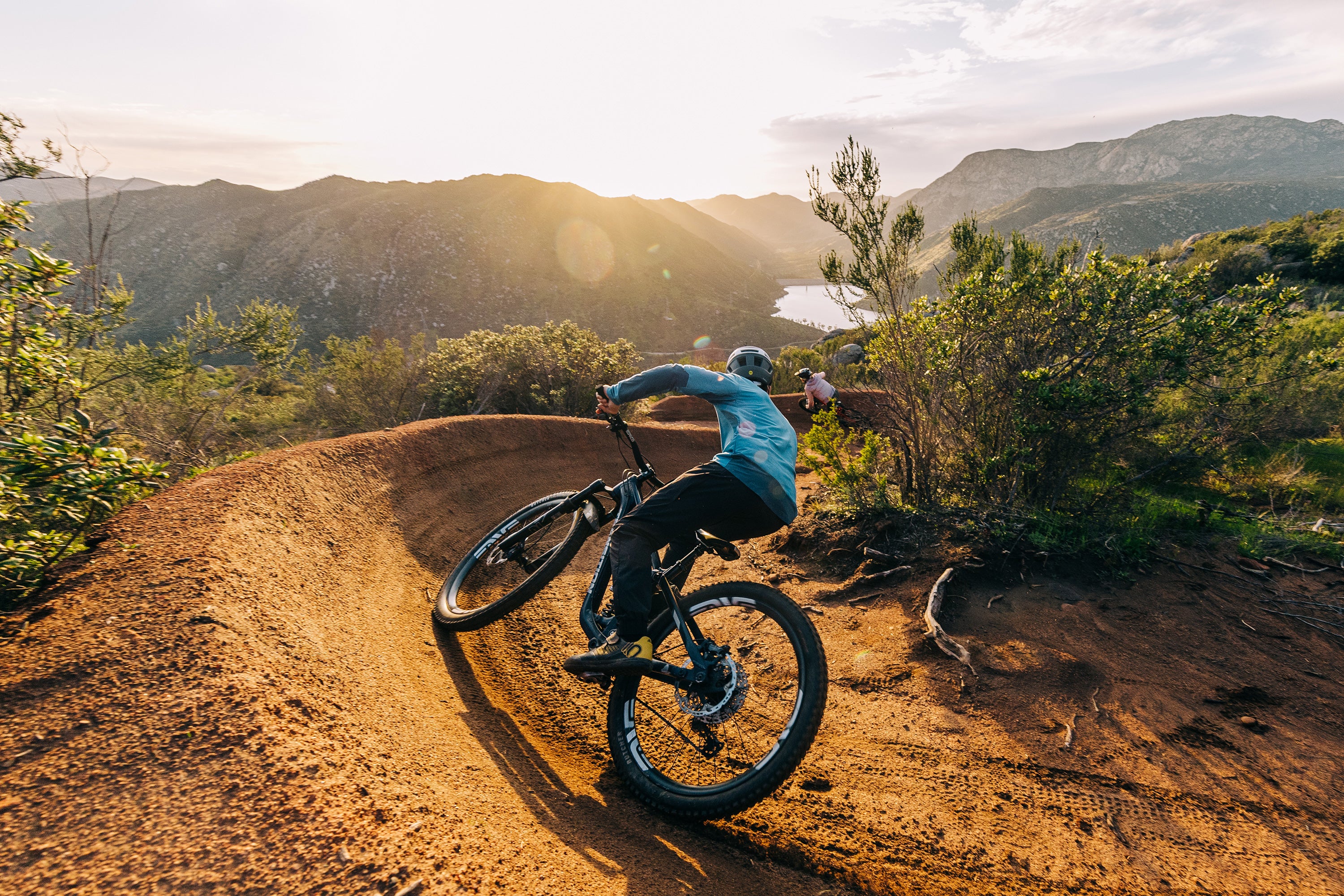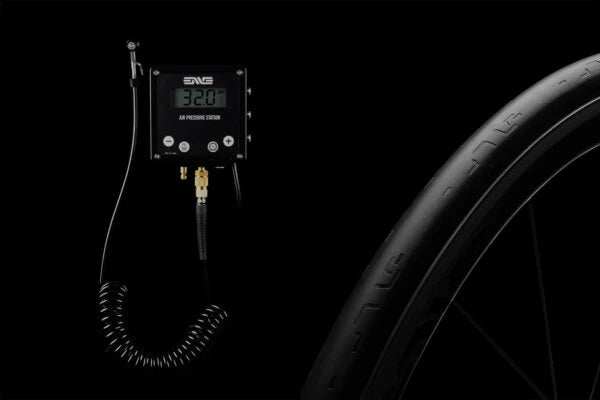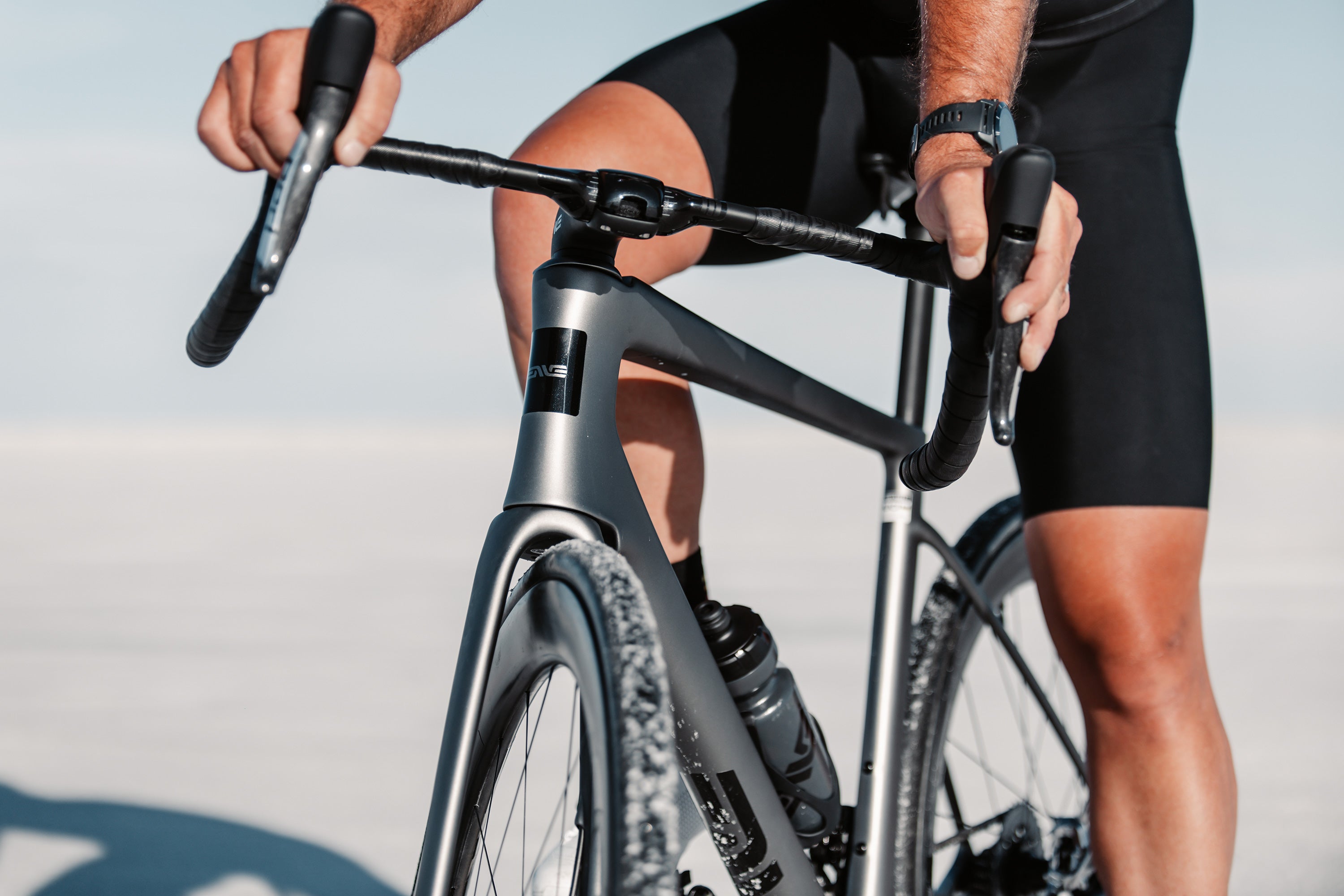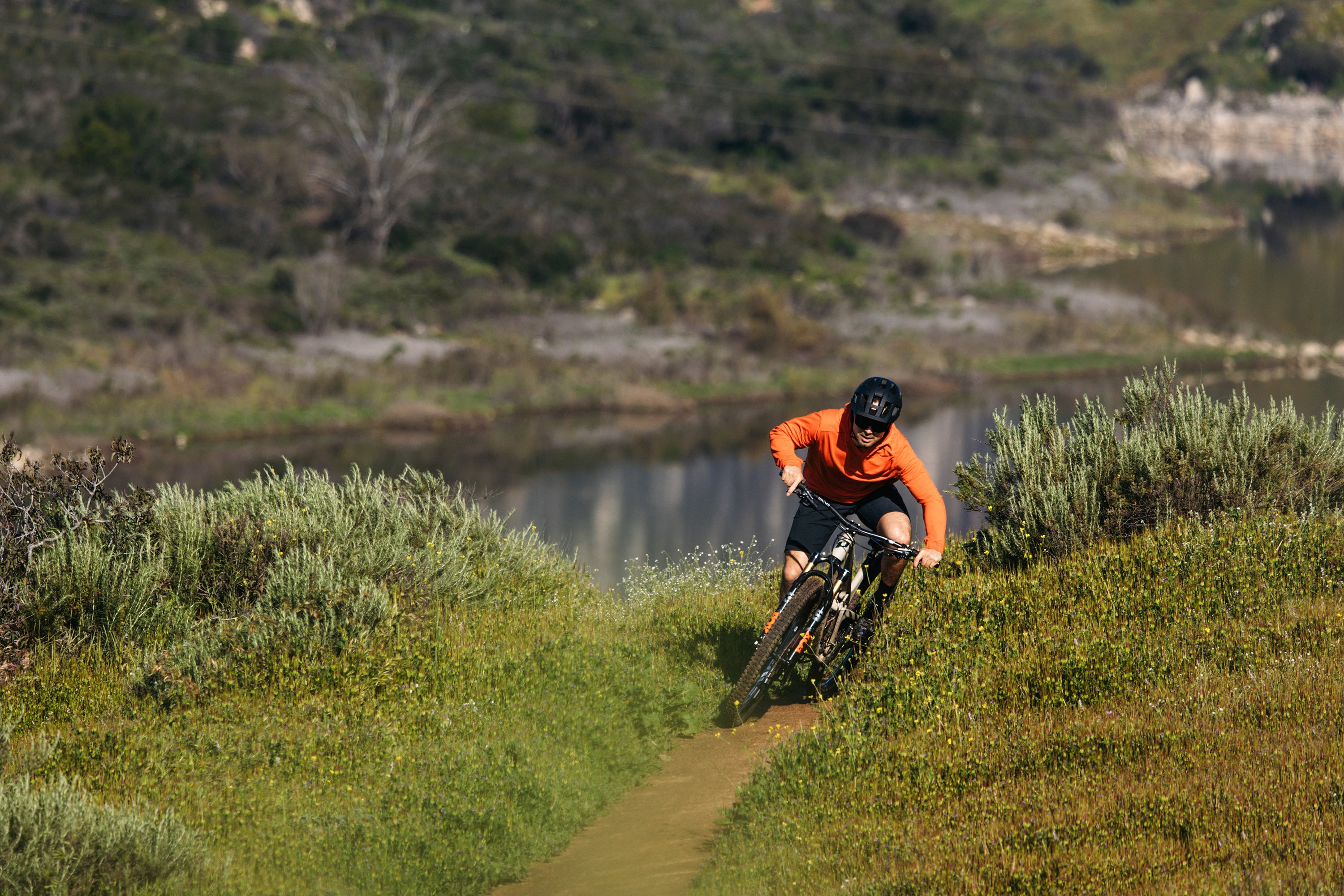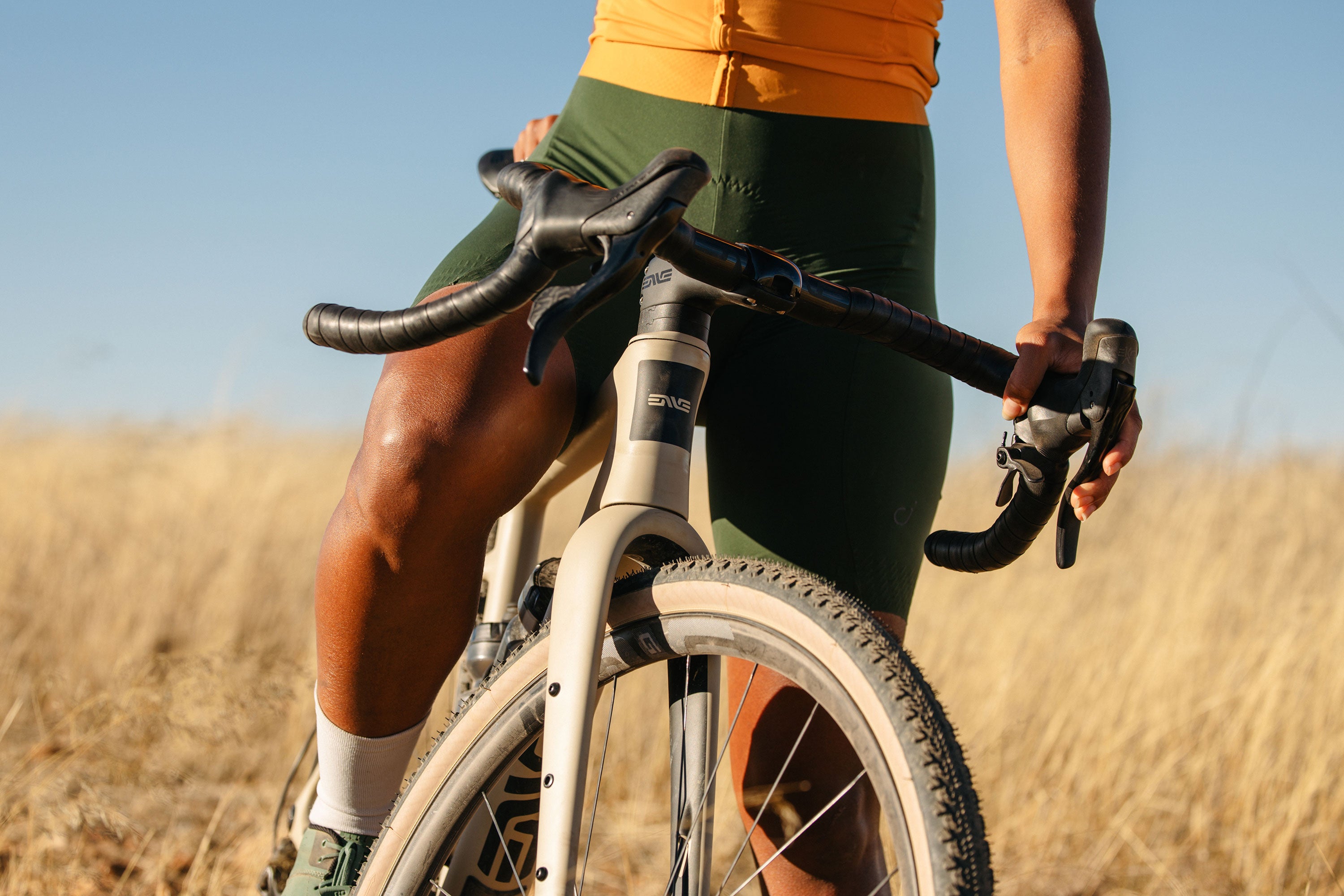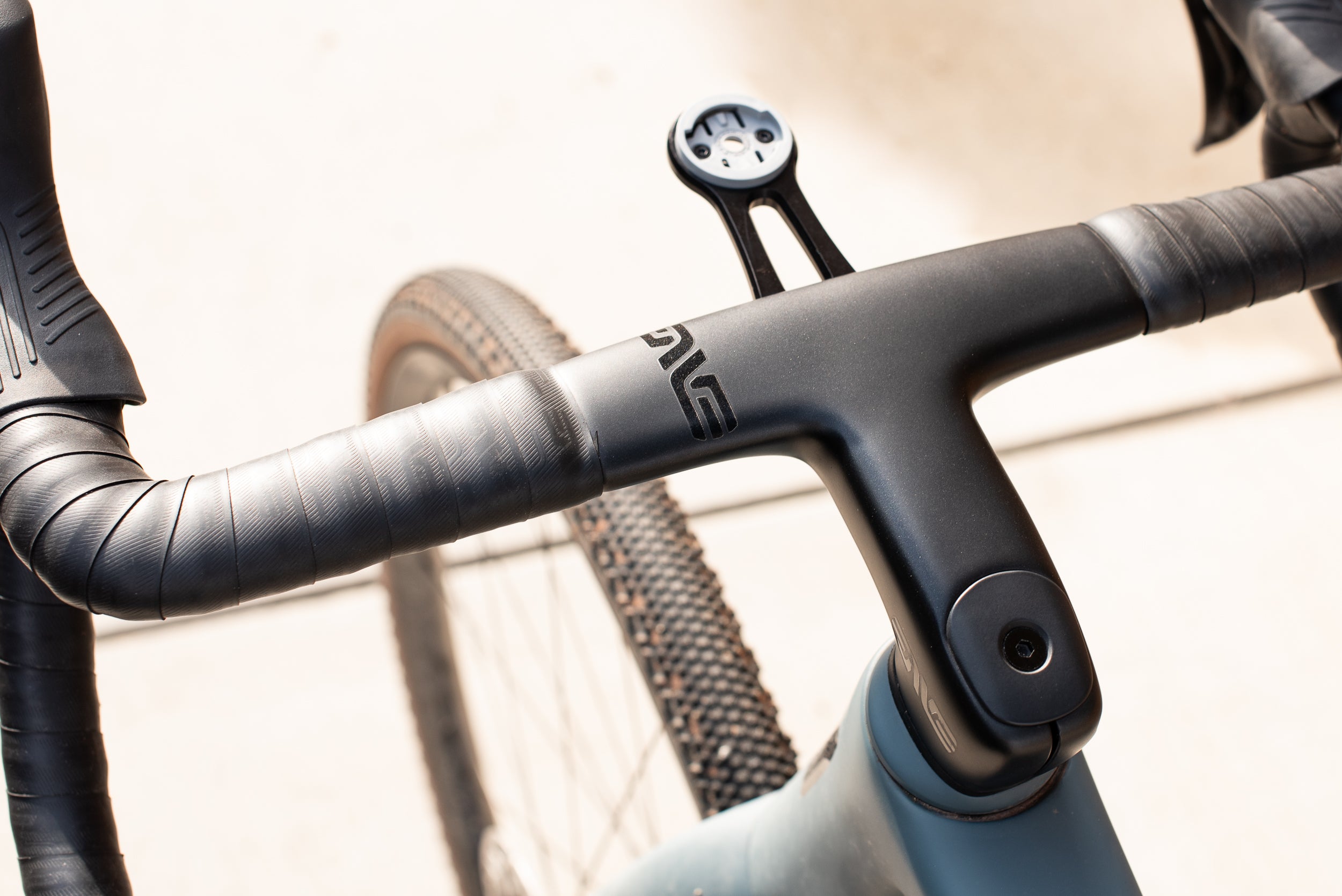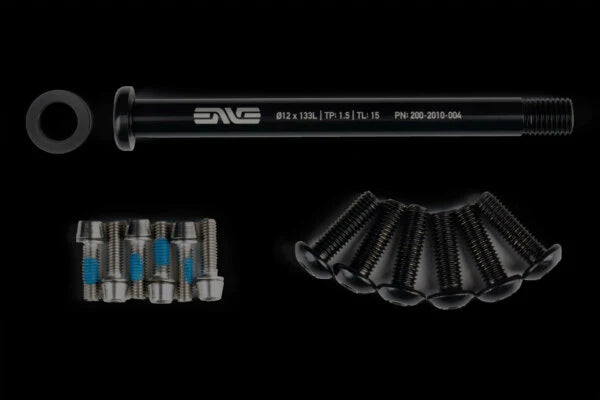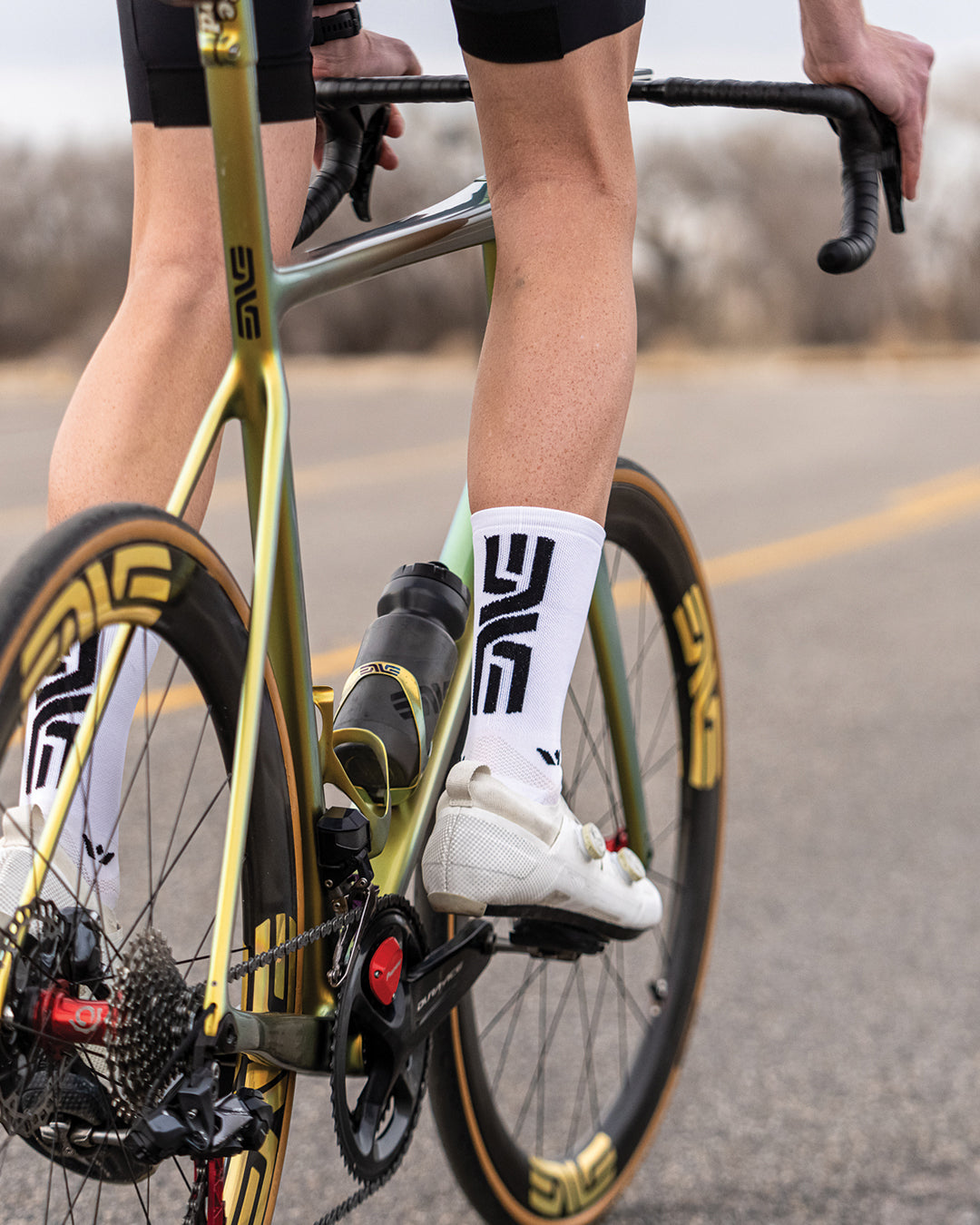BIKE CHECK: JAMIE'S ASSASSIN FOR THE PYRENEES
Jamie Wilkins is a freelance journalist, gravel fan, and bike geek, whose years of product testing have made him extremely particular, so strap in for this one and prepare to make notes. This is a dream FiftyOne Assassin build for the mountains that inspired the bike’s name, with a spec that is both high-end and hugely capable. Jamie provides a complete breakdown of the build and reasoning behind each piece of it. To read about the Pyrenean adventures it’s already been on, check out the full story on Rouleur.
Frameset: FiftyOne Assassin, size L, British Racing Green
Groupset: Shimano GRX Di2
Wheels: ENVE G23
Handlebar: ENVE Gravel Bar, 44cm
Stem: ENVE Stem, 80mm
Crankset: Shimano Dura-Ace, 175mm with Stages power meter
Chainrings: Absolute Black Oval, 46/30
Cassette: Shimano Dura-Ace, 11-30 or 11-34
Bar Tape: Arundel Synth Gecko
Pedals: Shimano XT SPD
Tires: Michelin Power Gravel, 47mm
Saddle: EC90
Seatpost: Crank Brothers Highline Gravel dropper post
Extras: 76projects A.S.S. top tube bag and Little Piggy bag

WHERE I RIDE
I’m fortunate to live in the Pyrenees (running EscapeToThePyrenees.com holidays) and the terrain is right at the gnarliest end of the gravel spectrum, overlapping a lot with mountain biking. The climbs are long and sometimes extremely steep, and the trails are generally rough, so the descents are obviously demanding.
A typical ride is four hours and maybe 2000m of climbing, taking in one of the famous cols such as Tourmalet or Soulor by the less known off-road routes, and up to eight hours on special days. Gravel racing is only just catching on here in France. I’ve ridden one local event and hope to do more next year, and maybe a bikepacking trip, too. The Assassin’s broad remit makes me want to explore everything it can do.
“My descending confidence has shot up radically. I was laughing out loud on the first ride.”
FRAMESET
I was a little nervous about changing from my old bike to the MTB-type fit of the Assassin, but I needn’t have been. I’m super comfortable on the bike and I’ve already done a couple of 8-hour rides in the first month. My Assassin is a size L with the recommended 80mm stem, which gives me exactly the same bar reach as my old bike but with a longer frame.
I can really feel the benefits of progressive geometry. My descending confidence has shot up radically. I was laughing out loud on the first ride. It isn’t a subtle difference.
At that point, I was using the ‘Short’ rear axle position (425mm chainstay) and ‘High’ front axle position (70˚ headtube, 75mm trail), which represented a smaller step from my old bike. I then switched to the Long/Low settings (435mm stays, 69.4˚, 88mm trail) and experienced the same epiphany all over again.
I quickly settled on the Long chainstay position, finding it gives me more climbing traction as well as stability. For a few rides, I switched between the front axle positions. In High, the Assassin steers much more like a road bike while still being really good off-road, so I thought I might stay with it. But after riding some of the steeper and rougher trails here in the Pyrenees, I was completely sold on the Long/Low setting.
The terrain here is what that geo was designed for and I’ll gladly give up a bit of on-road agility for the confidence I get on rocky descents. It suits the build of my bike, too – big tires, dropper post… Looking back on those early rides, it was a case of me having to tune into geometry, unlike anything I’d ridden before and let go of what was familiar to discover the benefits.
I’m now madly in love with how my Assassin rides. It bulldozes descents, yet also climbs brilliantly and rewards hard efforts like a great road bike.




GROUPSET
Electronic shifting is a luxury for gravel but it’s fantastic: very fast, faultlessly accurate, easy to set up and the battery lasts ages. In typical Shimano style, they hung back from gravel and then absolutely nailed it when they launched GRX. The hood and lever shapes are so comfortable and secure, and the clutch rear mech maintains total control.
All that said, my favorite feature is almost accidental. Because Di2 has two separate shift buttons on each side, the brake levers only move in a single plane, meaning on rough descents you can lean a finger against the lever and it doesn’t move inwards away from you. When I’ve ridden gravel bikes with a mechanical Shimano groupset, that’s something I’ve missed.
CRANKSET
It’s actually a Shimano Dura-Ace 9000 with a Wrap My Bike wrap to both protect it and make it look like the smarter 9100. I had newer cranksets that could have gone in this bike but this was the only one that can take my preferred sub-compact Absolute Black chainrings.
The left arm is a Stages power meter. I use power meters on my road bikes so I wanted one on this, too. Although I don’t look at it as much, it’s still a great pacing tool, whether I’m riding with guests and want to keep it smooth and steady, or doing an effort on my own. The Stages is very light, the left-leg-and-double-it data is sufficient on gravel, and being a gen 2 it’s reliable. It does have a ridiculous appetite for batteries, though.
The Zefal Crank Armour end caps protect against rock strikes. The crank wrap means they don’t fit quite as well as they should. I taped around them to stop dirt from getting under them. It looks a bit bodged but cranks are not consumable items.
GEARING
I’m a die-hard 2x fan and no one will ever persuade me that fewer gears are better. Here in the Pyrenees I need a wide range for the steep climbs but I don’t want big gaps between ratios, so 2×11 is ideal. I’ve experimented a fair bit and love the 46/30 x 11-34 that I’m using now.
Initially, I built the Assassin with an 11-30 cassette, which still left me a little over-geared because the big tires increase the final drive ratio slightly. I also wanted to use their grip to tackle even steeper climbs. I’ve just fitted a ZTTO 11-34 for an epic ride (5000m ascent) and I like it even more. It’s only a 3-tooth step at the top, whereas Shimano’s 11-34 is 4t and SRAM is 5t (10-33). I don’t want a bail-out gear or close steps from 11-15 like you do on the road, but I do need smooth steps all the way through the cassette so that I have the right gear for whatever the trail does next.
The 46/30 Absolute Black chainrings give an ideal spread and speed range. The 46 never feels too small because beyond 50kph on a gravel bike you’re probably coasting down a big road descent and it isn’t worth pedaling. The 30 inner ring gives me really low gears for the steep climbs without resorting to a huge, gappy cassette.
I’m a fan of oval chainrings for the pedaling efficiency and my road bikes have them, too. On gravel, I find that these Absolute Black rings noticeably aid traction by smoothing your power application. They also look great and shift well.
“On very steep, loose climbs, my Assassin hooks up like it has tank tracks!”
WHEELS & TIRES
You don’t know how good gravel riding can be until you’ve ridden ENVE G Series wheels. These G23s have repeatedly proven both their strength and the value of the Wide Hookless Bead feature when they have shrugged off rock strikes and never pinch punctured, despite riding nothing but rough Pyrenean terrain and having seen two years of duty in my previous bike (wearing 40mm tires). They’re game-changers.
On top of that, they’re compliant and incredibly light; both are greatly appreciated in the mountains. The ultra-durable Chris King R45D hubs are the cherry on top.
The tires are Michelin Power Gravel in 47mm. At 577g, they’re not light but they’re grams well spent. They have proven to be extremely robust and the traction is incredible. I run them at 25/28psi (1.7/1.9bar) front and rear, below the oddly high 36psi (2.5bar) stated minimum. On very steep, loose climbs, my Assassin hooks up like it has tank tracks!
My old bike wore Bontrager GR2 40mm because that’s the biggest it could take. The tread pattern of the Michelins is similar yet they find so much more grip. While this is hardly news, clearly bigger is better on tough terrain. I might try other tires in the future but only in 45-47mm.
HANDLEBAR & STEM
I love the ride quality of ENVE bars and stems – they’re on my road bikes too – and I know the craft and passion that goes into everything they make. I didn’t want anything less on this build.
The Gravel Bar has a brilliantly judged flare – from 44cm at the hoods to 56cm in the drops – which adds loads of control and confidence for descending without placing your levers at a crazy angle or too wide when climbing. The compliance built into the drops really helps to reduce fatigue over a long ride with several big descents.
The bar is double-wrapped in Arundel Synth Gecko bar tape, partly for added comfort but mostly for a more comfortable fit because I have big hands. I like tacky, squidgy bar tape. The neat computer mount is also ENVE.
SEATPOST & SADDLE
This is the one part of the build that I don’t think I got quite right, even though the Crank Brothers Highline Gravel is a really good dropper post and the clever lever is easy to use from the drops or the hoods. I chose it because, given my 805mm seat height, the 80mm travel seemed more appropriate than the 50mm of the alternatives from Fox and DT Swiss. I didn’t think 50mm would feel like enough to be worthwhile.
However, in use, I find the full 80mm drop is actually too much because the saddle just disappears and I can’t use it so effectively as a control point between my thighs. Most of the time I try to push it just part way. What’s more, I rarely feel like I need it. I’d probably rather have a lighter and more compliant regular seatpost and put up with a saddle in my chest a couple of times per month.
That saddle is a cheap Power copy for which I make no apologies – its flexible plastic hull actually makes it more comfortable than the expensive real S-Works Power on my ‘climber’ road bike, so it stayed. I even bought another for my aero bike.
PEDALS
I used a different SPD type pedal initially but they lacked lateral support. The XT SPD solves that perfectly and feels as stable as a road pedal. This bike deserves the XTR version but your pedals do hit rocks sometimes out here and that would be too painful!
EXTRAS
76projects is a small British company making clever, problem-solving products, and I’m a fan. The Little Piggy tool carrier bolts to the Assassin’s downtube bosses and securely holds a dry bag with two tubes, levers, multitool, and CO2, plus a chain link in a dedicated molded space. It’s completely secure and a million times better than a saddlebag. It stays on my bike all the time and my road bikes both have an original Piggy, too.
The 76projects A.S.S. top tube bag (Anti Strap System) has a clever quick-release mechanism that uses the Assassin’s top tube bosses, so you get the security and neat looks of a bolt-on bag but the quick removal of a bag that uses Velcro straps. It’s an ideal size for big days out.
Water carrying is by classic Elite Ciussi steel bottle cages which can be bent in for an extra-tight grip. They’re not invincible but they do a good job.
You can follow Jamie on Instagram, Strava, and at Escape To The Pyrenees.



